Quadrature Current Compensation in Non-Sinusoidal Circuits Using Geometric Algebra and Evolutionary Algorithms
Abstract
1. Introduction
2. Geometric Algebra and Power Systems
2.1. Basic Definitions of Geometric Algebra
2.2. Application of Geometric Algebra to Power Systems
Geometric Apparent Power
3. Problem Description and Solution Strategy
3.1. Problem Description
3.2. Solution Approach
4. Empirical Study
4.1. Case Studies
- Czarnecki’s case study [39]: this example consists of simple circuit with a harmonic polluted ideal voltage source of normalized frequency rad/swith an active power W. Figure 5a shows the circuit load, while Figure 5b shows the solution found by Czarnecki with H, H, F, and F, who compensates the reactive power of the harmonic components by the 1-port X of a precalculated admitance. The method proposed by Czarnecki was able to compensate the source RMS current to 3.10 A from the initial 12.24 A [39].Using (10), the voltage in domain can be expressed as
- Castro-Nuñez and Castro-Puche’s case study [26]: this example (already studied by Czarnecki) consists of a circuit with a highly distorted voltage source with fundamental plus 2 harmonics and a linear load, being the voltagewhich translates towhere the uncompensated current is 44.72 A. Figure 6a shows the circuit with the distorted voltage source and the linear load, while Figure 6b displays the compensator for this linear load. The compensator design by Castro-Nuñez reduced the source RMS current to 20.10 A [22].
- Castilla’s case study [33]: this example consists of a circuit with a distorted voltage source with three harmonics given by:which translates towith an uncompensated RMS current of I = 4.21 A. Although the structure of this compensator was not described in the paper published by Castilla [33], this author indicated that it reduced the source RMS current to 3.21 A.
4.2. Filter Optimization
- C-type filter: it is is mainly used for suppressing the low order of harmonics [13].
- Series LC-type filter: this filter is also considered to reduce line current harmonics [42].
- Parallel LC-type filter: it provides low impedance shunt branches to the load’s harmonic current, which allows to reduce the harmonic current flowing into the line [42].
- Triple tuned filter: this type of filter is electrically equivalent to three parallel tuned filters connected in series [43].
- Foster’s filter: this filter combines in parallel single L-type and C-type filters and also parallel LC-type filters.
- Czarnecki’s 4-elements filter: it is a filter that combines two L and two C elements using a series/parallel configuration [39].
4.3. Simulation Results
5. Conclusions
Author Contributions
Funding
Acknowledgments
Conflicts of Interest
Appendix A. General Concepts
Appendix B. Geometric Operations
References
- Fang, X.; Misra, S.; Xue, G.; Yang, D. Smart grid—The new and improved power grid: A survey. IEEE Commun. Surv. Tutor. 2012, 14, 944–980. [Google Scholar] [CrossRef]
- Merabet, L.; Saad, S.; Abdeslam, D.O.; Merckle, J. Direct neural method for harmonic currents estimation using adaptive linear element. Electr. Power Syst. Res. 2017, 152, 61–70. [Google Scholar] [CrossRef]
- Bollen, M.H.; Das, R.; Djokic, S.; Ciufo, P.; Meyer, J.; Rönnberg, S.K.; Zavodam, F. Power quality concerns in implementing smart distribution-grid applications. IEEE Trans. Smart Grid 2017, 8, 391–399. [Google Scholar] [CrossRef]
- Bouzid, A.M.; Guerrero, J.M.; Cheriti, A.; Bouhamida, M.; Sicard, P.; Benghanem, M. A survey on control of electric power distributed generation systems for microgrid applications. Renew. Sustain. Energy Rev. 2015, 44, 751–766. [Google Scholar] [CrossRef]
- Czarnecki, L.S.; Pearce, S.E. Compensation objectives and currents’ physical components-based generation of reference signals for shunt switching compensator control. IET Power Electron. 2009, 2, 33–41. [Google Scholar] [CrossRef]
- Willems, J.L. Budeanu’s reactive power and related concepts revisited. IEEE Trans. Instrum. Meas. 2011, 60, 1182–1186. [Google Scholar] [CrossRef]
- De Léon, F.; Cohen, J. AC power theory from Poynting theorem: Accurate identification of instantaneous power components in nonlinear-switched circuits. IEEE Trans. Power Deliv. 2010, 25, 2104–2112. [Google Scholar] [CrossRef]
- Budeanu, C. Puissances Reactives Et Fictives; Number 2; Impr. Cultura Nationala: Bouchares, Romania, 1927. [Google Scholar]
- Staudt, V. Fryze-Buchholz-Depenbrock: A time-domain power theory. In Proceedings of the 2008 International School on Nonsinusoidal Currents and Compensation (ISNCC 2008), Lagow, Poland, 10–13 June 2008; pp. 1–12. [Google Scholar]
- Czarnecki, L.S. What is wrong with the Budeanu concept of reactive and distortion power and why it should be abandoned. IEEE Trans. Instrum. Meas. 1987, 1001, 834–837. [Google Scholar] [CrossRef]
- Czarnecki, L. Budeanu and Fryze: Two frameworks for interpreting power properties of circuits with nonsinusoidal voltages and currents. Electr. Eng. 1997, 80, 359–367. [Google Scholar] [CrossRef]
- Czarnecki, L.S. Currents’ physical components (CPC) concept: A fundamental of power theory. In Proceedings of the 2008 International School on Nonsinusoidal Currents and Compensation (ISNCC 2008), Lagow, Poland, 10–13 June 2008; pp. 1–11. [Google Scholar]
- Xiao, Y.; Zhao, J.; Mao, S. Theory for the design of C-type filter. In Proceedings of the 2004 11th International Conference on Harmonics and Quality of Power, Lake Placid, NY, USA, 12–15 September 2004; pp. 11–15. [Google Scholar]
- Biswas, P.P.; Suganthan, P.N.; Amaratunga, G.A. Minimizing harmonic distortion in power system with optimal design of hybrid active power filter using differential evolution. Appl. Soft Comput. 2017, 61, 486–496. [Google Scholar] [CrossRef]
- Li, W.; Man, Y.; Li, G. Optimal parameter design of input filters for general purpose inverter based on genetic algorithm. Appl. Math. Comput. 2008, 205, 697–705. [Google Scholar] [CrossRef]
- Karadeniz, A.; Balci, M.E. Comparative evaluation of common passive filter types regarding maximization of transformer’s loading capability under non-sinusoidal conditions. Electr. Power Syst. Res. 2018, 158, 324–334. [Google Scholar] [CrossRef]
- Chen, Y.M. Passive filter design using genetic algorithms. IEEE Trans. Ind. Electr. 2003, 50, 202–207. [Google Scholar] [CrossRef]
- Klempka, R. Passive power filter design using genetic algorithm. Praz. Elektrotech. 2013, 5, 294–301. [Google Scholar]
- Lachichi, A.; Junyent-Ferre, A.; Green, T. filter design optimization for LV modular multilevel converters in hybrid ac/dc microgrids application. In Proceedings of the 2018 International Conference on Electrical Sciences and Technologies in Maghreb (CISTEM), Algiers, Algeria, 28–31 October 2018; pp. 1–5. [Google Scholar]
- Steinmetz, C.P. Theory and Calculation of Alternating Current Phenomena; McGraw-Hill Book Company, Inc.: New York, NY, USA, 1916; Volume 4. [Google Scholar]
- Castro-Núñez, M.; Londoño-Monsalve, D.; Castro-Puche, R. M, the conservative power quantity based on the flow of energy. J. Eng. 2016, 2016, 269–276. [Google Scholar] [CrossRef]
- Castro-Nunez, M.; Castro-Puche, R. The IEEE Standard 1459, the CPC power theory, and geometric algebra in circuits with nonsinusoidal sources and linear loads. IEEE Trans. Circuits Syst. I Regul. Pap. 2012, 59, 2980–2990. [Google Scholar] [CrossRef]
- Sangston, K.J. Geometry of complex data. IEEE Aerosp. Electr. Syst. Mag. 2016, 31, 32–69. [Google Scholar] [CrossRef]
- Hestenes, D.; Sobcyk, G. Clifford Algebra to Geometric Calculus: A Unified Language for Mathematics and Physics (Fundamental Theories of Physics); Kluwer Academic Publishers: Aarhus, Denmark, 1987. [Google Scholar]
- Chappell, J.M.; Drake, S.P.; Seidel, C.L.; Gunn, L.J.; Iqbal, A.; Allison, A.; Abbott, D. Geometric algebra for electrical and electronic engineers. Proc. IEEE 2014, 102, 1340–1363. [Google Scholar] [CrossRef]
- Castro-Nunez, M.; Castro-Puche, R. Advantages of geometric algebra over complex numbers in the analysis of networks with nonsinusoidal sources and linear loads. IEEE Trans. Circuits Syst. I Regul. Pap. 2012, 59, 2056–2064. [Google Scholar] [CrossRef]
- Petroianu, A.I. A geometric algebra reformulation and interpretation of Steinmetz’s symbolic method and his power expression in alternating current electrical circuits. Electr. Eng. 2015, 97, 175–180. [Google Scholar] [CrossRef]
- Menti, A.; Zacharias, T.; Milias-Argitis, J. Geometric algebra: A powerful tool for representing power under nonsinusoidal conditions. IEEE Trans. Circuits Syst. I Regul. Pap. 2007, 54, 601–609. [Google Scholar] [CrossRef]
- Castilla, M.; Bravo, J.C.; Ordonez, M. Geometric algebra: A multivectorial proof of Tellegen’s theorem in multiterminal networks. IET Circuits Devices Syst. 2008, 2, 383–390. [Google Scholar] [CrossRef]
- Castilla, M.; Bravo, J.C.; Ordonez, M.; Montaño, J.C. Clifford theory: A geometrical interpretation of multivectorial apparent power. IEEE Trans. Circuits Syst. I Regul. Pap. 2008, 55, 3358–3367. [Google Scholar] [CrossRef]
- Gilbert, J.E.; Gilbert, J.; Murray, M. Clifford Algebras and Dirac Operators in Harmonic Analysis; Cambridge University Press: Cmabridge, UK, 1991; Volume 26. [Google Scholar]
- Bravo, J.C.; Castilla, M.V. Energy conservation law in industrial architecture: An approach through geometric algebra. Symmetry 2016, 8, 92. [Google Scholar] [CrossRef]
- Castilla, M.V. Control of disturbing loads in residential and commercial buildings via geometric algebra. Sci. World J. 2013, 2013. [Google Scholar] [CrossRef]
- Jeon, S.J. Representation of apparent power of non-sinusoidal multi-line power system using geometric algebra. Trans. Korean Inst. Electr. Eng. 2009, 58, 2064–2070. [Google Scholar]
- Castro-Núñez, M.; Castro-Puche, R.; Nowicki, E. The use of geometric algebra in circuit analysis and its impact on the definition of power. In Proceedings of the 2010 International School on Nonsinusoidal Currents and Compensation (ISNCC), Lagow, Poland, 15–18 June 2010; pp. 89–95. [Google Scholar]
- Henderson, R.D.; Rose, P.J. Harmonics: The effects on power quality and transformers. IEEE Trans. Ind. Appl. 1994, 30, 528–532. [Google Scholar] [CrossRef]
- De La Rosa, F. Harmonics and Power Systems; CRC Press: Boca Raton, FL, USA, 2006. [Google Scholar]
- El-Saadany, E.; Zeineldin, H. An optimum reactance one-port compensator for harmonic mitigation. Electr. Power Qual. Util. J. 2005, 11, 77–82. [Google Scholar]
- Czarnecki, L.S. Minimisation of distortion power of nonsinusoidal sources applied to linear loads. In IEE Proceedings C-Generation, Transmission and Distribution; IET Digital Library: Hertfordshire, UK, 1981; Volume 128, pp. 208–210. [Google Scholar]
- Holland, J.H. Adaptation in Natural and Artificial Systems: An Introductory Analysis with Applications to Biology, Control, and Artificial Intelligence; The MIT Press: Cambridge, MA, USA; London, UK, 1975. [Google Scholar]
- Mathworks. Genetic algorithm solver. In MATLAB Global Optimization Toolbox; The MathWorks, Inc.: Natick, MA, USA, 2018. [Google Scholar]
- Peng, F.Z.; Su, G.J.; Farquharson, G. A series LC filter for harmonic compensation of AC drives. In Proceedings of the 30th Annual IEEE Power Electronics Specialists Conference (PESC 99), Charleston, SC, USA, 1 July 1999; IEEE: Piscataway, NJ, USA, 1999; Volume 1, pp. 213–218. [Google Scholar]
- Bartzsch, C.; Huang, H.; Roessel, R.; Sadek, K. Triple tuned harmonic filters-design principle and operating experience. In Proceedings of the International Conference on Power System Technology (PowerCon 2002), Kunming, China, 13–17 October 2002; IEEE: Piscataway, NJ, USA, 2002; Volume 1, pp. 542–546. [Google Scholar]
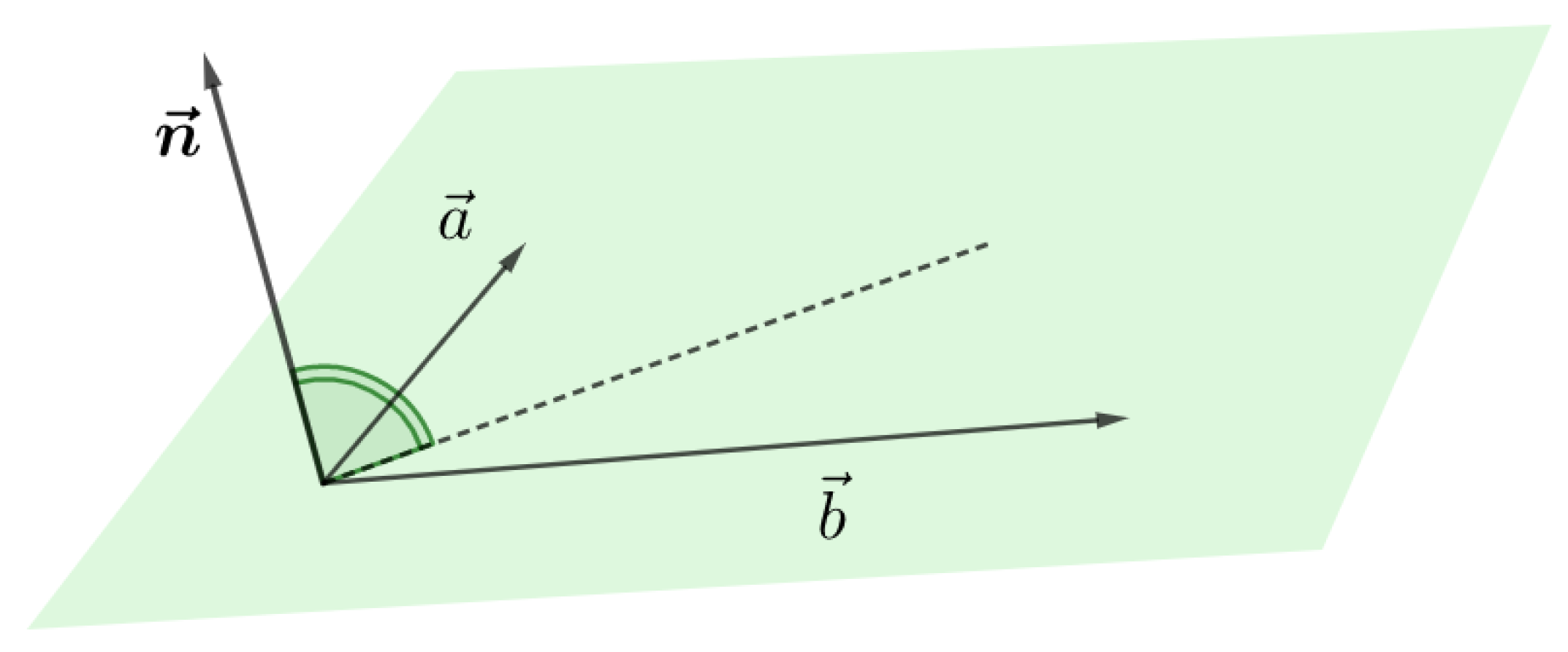
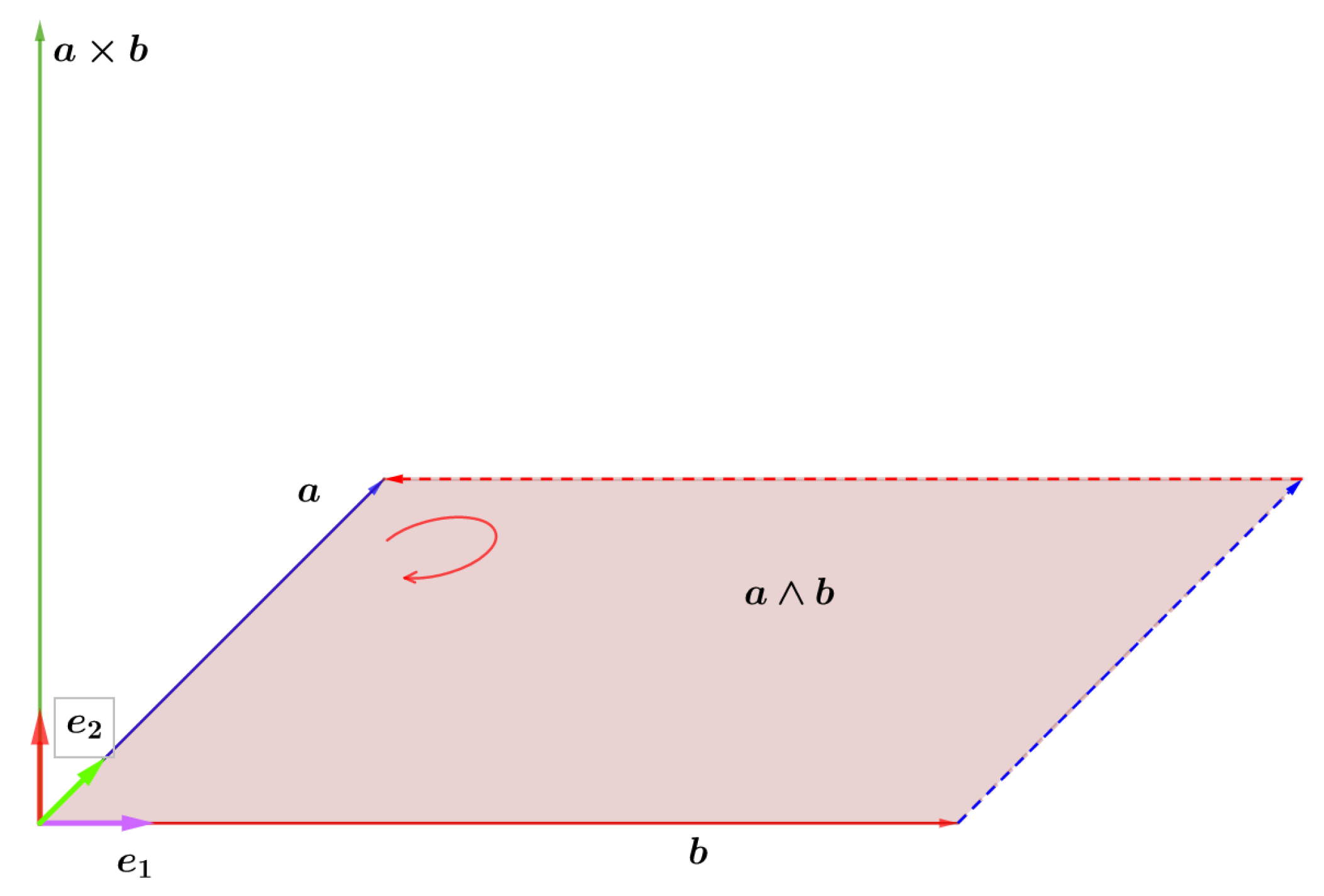
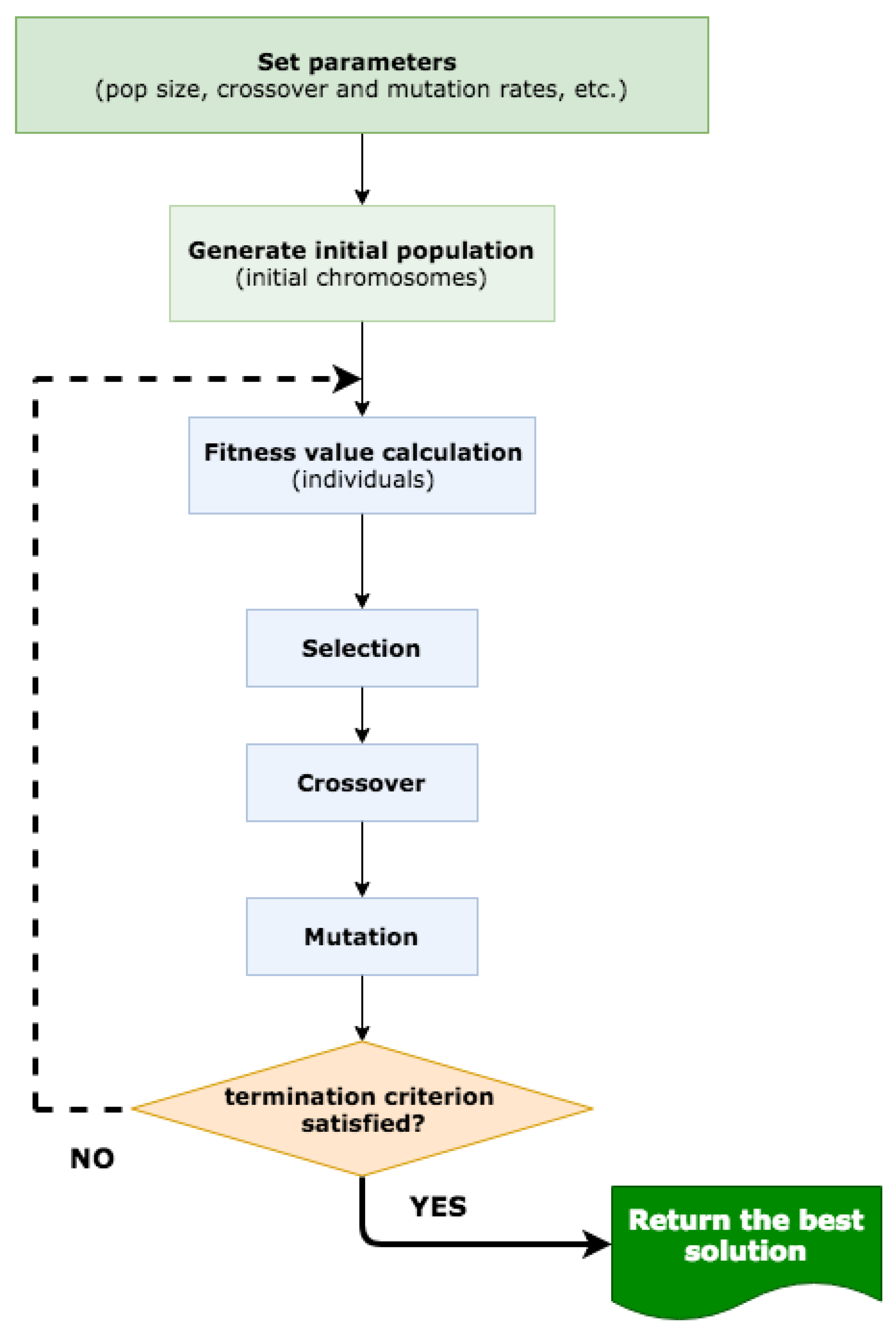

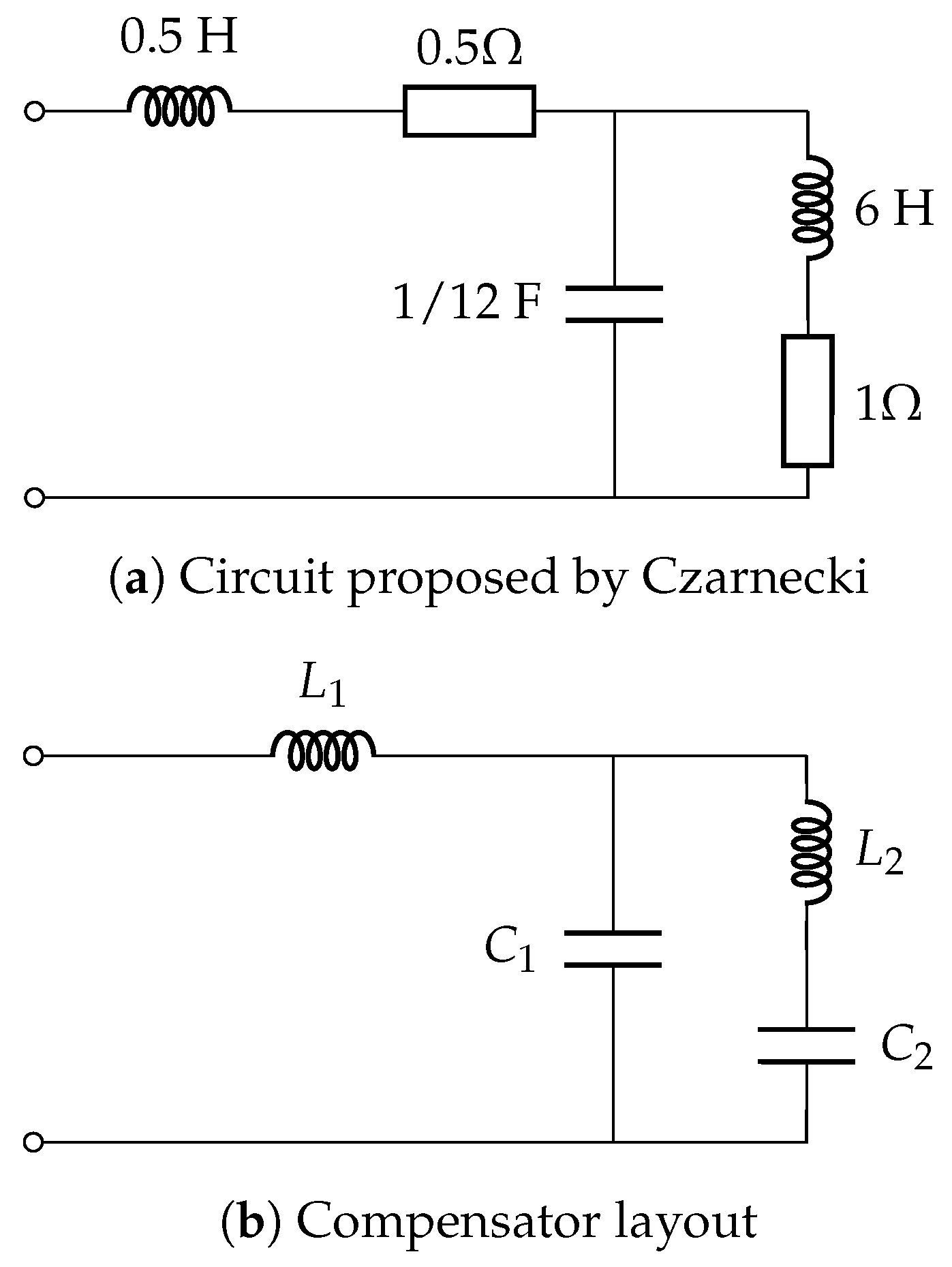
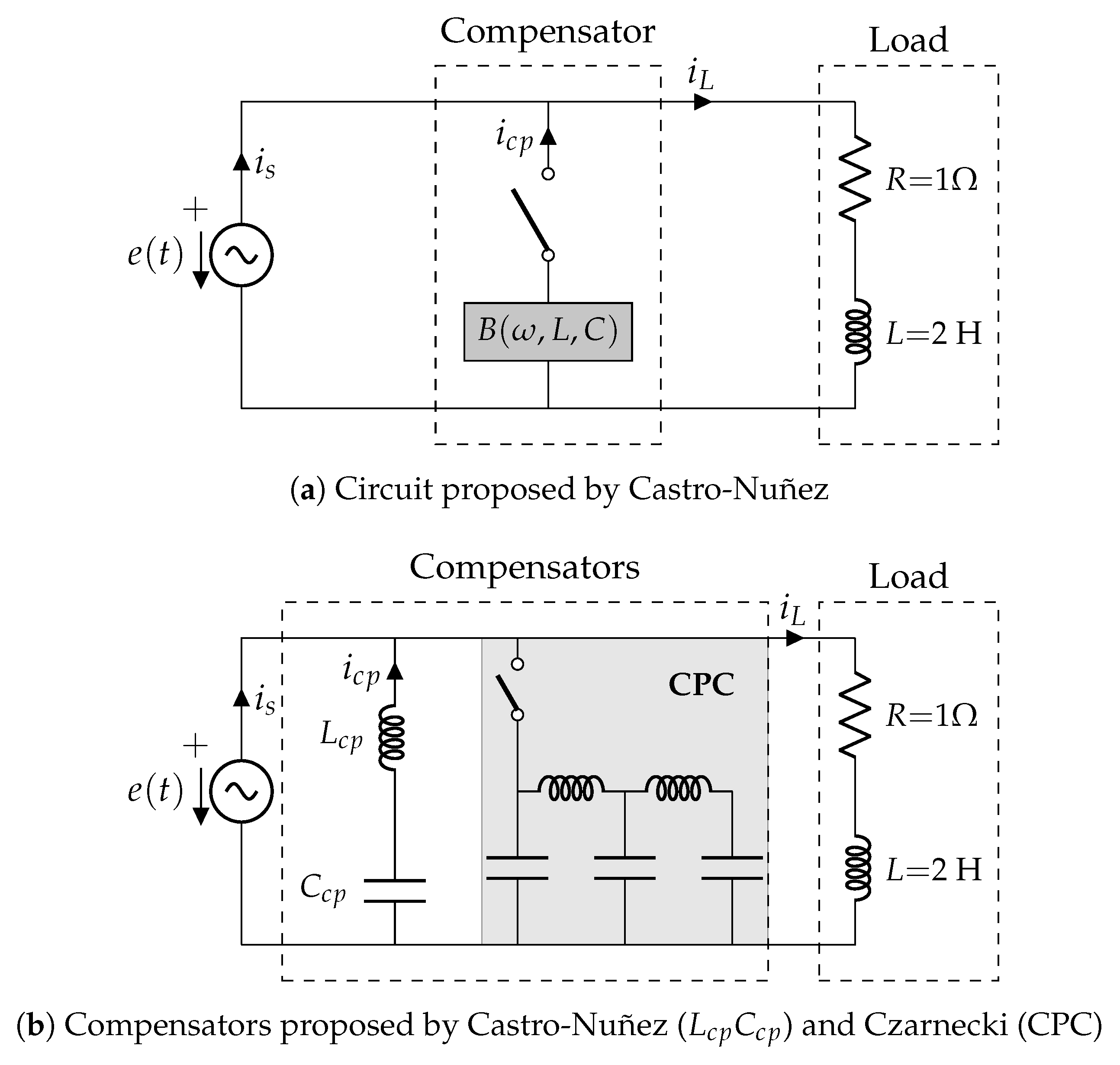
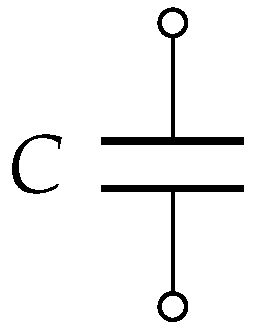
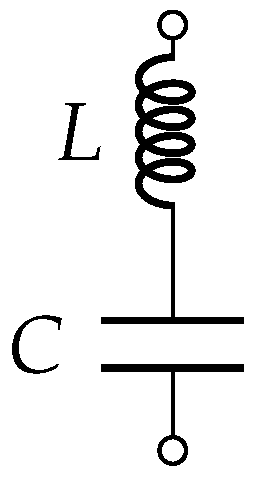
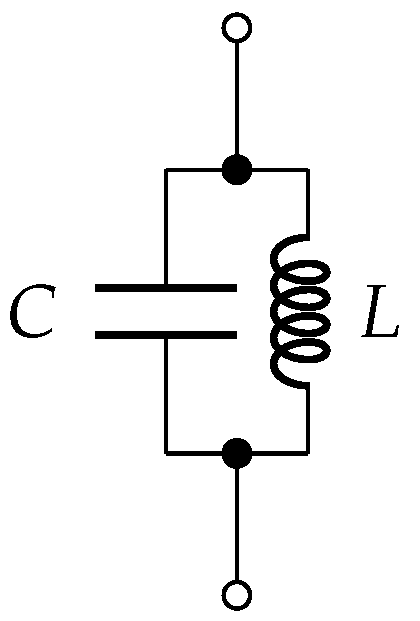
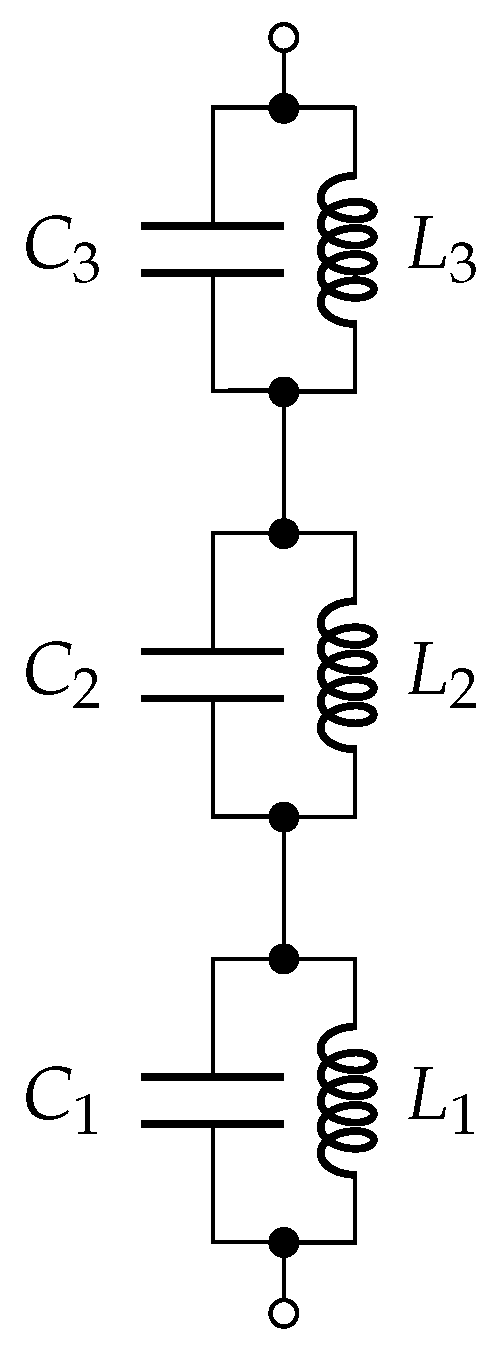

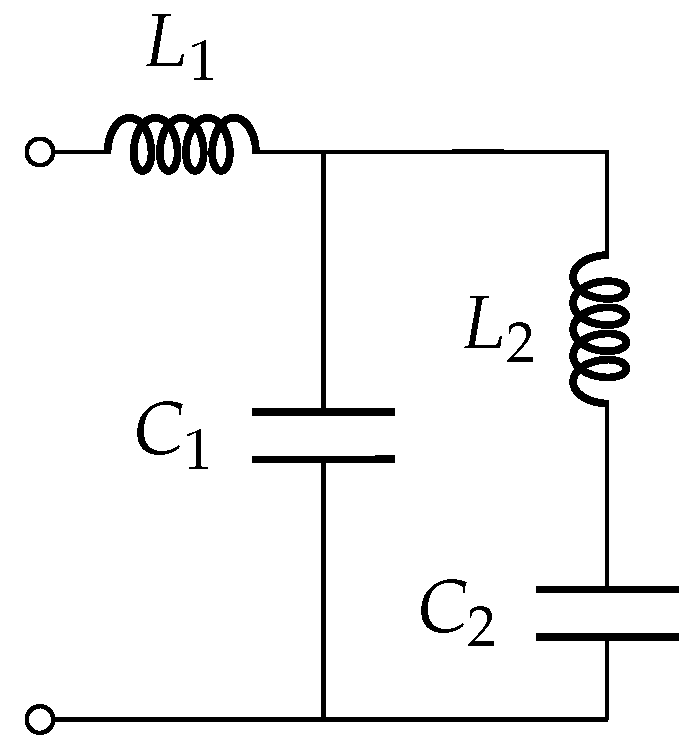
| Type of Filter | ||||||
|---|---|---|---|---|---|---|
| C | Series LC | Parallel LC | Triple Tune | Foster | Czarnecki 4 | |
| Best (A) | 12.2409 | 7.5015 | 12.7235 | 3.0954 | 3.0948 | 3.0987 |
| Mean (A) | 12.2415 | 7.5017 | 12.7249 | 3.1040 | 3.1079 | 3.1454 |
| Std. dev. | 0.0008 | 0.0002 | 0.0011 | 0.0124 | 0.0155 | 0.0468 |
| Type of Filter | ||||||
|---|---|---|---|---|---|---|
| C | Series LC | Parallel LC | Triple Tune | Foster | Czarnecki 4 | |
| Best (A) | 38.0511 | 20.0275 | 75.5999 | 20.0288 | 20.0094 | 20.0271 |
| Mean (A) | 38.0513 | 20.0313 | 75.7476 | 20.5668 | 20.0807 | 20.0415 |
| Std. dev. | 0.0003 | 0.0030 | 0.1411 | 0.7039 | 0.0617 | 0.0150 |
| Type of Filter | ||||||
|---|---|---|---|---|---|---|
| C | Series LC | Parallel LC | Triple Tune | Foster | Czarnecki 4 | |
| Best (A) | 3.7938 | 3.5236 | 3.8242 | 3.2024 | 3.2131 | 3.5268 |
| Mean (A) | 3.7938 | 3.5437 | 3.8242 | 3.2613 | 3.2722 | 3.5313 |
| Std. dev. | 0.0000 | 0.0210 | 0.0000 | 0.0369 | 0.0304 | 0.0067 |
| Czarnecki | Castro-Nuñez | Castilla | ||||||||||||||||
|---|---|---|---|---|---|---|---|---|---|---|---|---|---|---|---|---|---|---|
| C | Series LC | Parallel LC | Triple Tune | Foster | Czarnecki 4 | C | Series LC | Parallel LC | Triple Tune | Foster | Czarnecki 4 | C | Series LC | Parallel LC | Triple Tune | Foster | Czarnecki 4 | |
| (H) | - | 10.2116 | 99.995 | 0.794 | 17.457 | 5.906 | - | 1.953 | 2.000 | 0.256 | 1.511 | 1.977 | - | 15.6537 | 10.000 | 0.082 | 10.000 | 9.998 |
| (H) | - | - | - | 0.724 | 6.555 | 19.000 | - | - | - | 0.063 | 1.641 | - | - | - | - | 0.072 | 6.651 | 9.903 |
| (H) | - | - | - | 1.920 | 5.945 | - | - | - | - | 0.020 | 1.198 | 0.320 | - | - | - | 0.021 | 0.660 | - |
| (F) | 0.010 | 43,373.492 | 13.0128 | 264,930.386 | 2991.689 | 34,530.000 | 135,667.470 | 224,040.6422 | 304,711.7123 | 650,723.116 | 21,800.000 | 172,388.219 | 7.157 | 0.636 | 7.291 | 20.098 | 5.797 | 2.079 |
| (F) | - | - | - | 106,280.564 | 59,192.627 | 12,880.000 | - | - | - | 985,889.243 | 366,000.000 | 50,406.350 | - | - | - | 165.469 | 1.451 | 16.065 |
| (F) | - | - | - | 586,142.767 | 26,682.668 | - | - | - | - | 89,338.809 | 107,600.000 | - | - | - | - | 21.464 | 0.844 | - |
| (A) | 12.240 | 7.501 | 12.723 | 3.095 | 3.094 | 3.098 | 38.051 | 20.027 | 75.599 | 20.028 | 20.009 | 20.027 | 3.793 | 3.523 | 3.824 | 3.202 | 3.213 | 3.526 |
| Current | Power Factor | ||||||||
|---|---|---|---|---|---|---|---|---|---|
| Czarnecki | 12.24 | 3.09 | 3.10 | 3.09 | 0.243 | 0.959 | 0.959 | 0.186 | 0.959 |
| Castro-Nuñez | 44.72 | 20.00 | 20.10 | 20.00 | 0.445 | 0.993 | 0.988 | 0.445 | 0.992 |
| Castilla | 4.21 | 3.20 | 3.21 | 3.20 | 0.630 | 0.829 | 0.829 | 0.630 | 0.829 |
© 2019 by the authors. Licensee MDPI, Basel, Switzerland. This article is an open access article distributed under the terms and conditions of the Creative Commons Attribution (CC BY) license (http://creativecommons.org/licenses/by/4.0/).
Share and Cite
Montoya, F.G.; Alcayde, A.; Arrabal-Campos, F.M.; Baños, R. Quadrature Current Compensation in Non-Sinusoidal Circuits Using Geometric Algebra and Evolutionary Algorithms. Energies 2019, 12, 692. https://doi.org/10.3390/en12040692
Montoya FG, Alcayde A, Arrabal-Campos FM, Baños R. Quadrature Current Compensation in Non-Sinusoidal Circuits Using Geometric Algebra and Evolutionary Algorithms. Energies. 2019; 12(4):692. https://doi.org/10.3390/en12040692
Chicago/Turabian StyleMontoya, Francisco G., Alfredo Alcayde, Francisco M. Arrabal-Campos, and Raul Baños. 2019. "Quadrature Current Compensation in Non-Sinusoidal Circuits Using Geometric Algebra and Evolutionary Algorithms" Energies 12, no. 4: 692. https://doi.org/10.3390/en12040692
APA StyleMontoya, F. G., Alcayde, A., Arrabal-Campos, F. M., & Baños, R. (2019). Quadrature Current Compensation in Non-Sinusoidal Circuits Using Geometric Algebra and Evolutionary Algorithms. Energies, 12(4), 692. https://doi.org/10.3390/en12040692






